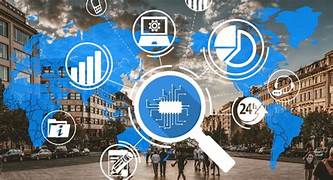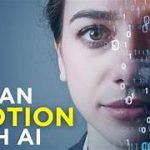The Role of AI in Improving Urban Planning and Development
As urbanization accelerates worldwide, cities face mounting challenges in managing growth, ensuring sustainability, and enhancing the quality of life for their inhabitants. Urban planning and development are at the forefront of these efforts, requiring innovative solutions to address complex issues such as population density, resource allocation, and environmental impact. Artificial intelligence (AI) is emerging as a transformative tool in this domain, offering the potential to revolutionize how cities are designed, managed, and sustained. This article explores the pivotal role of AI in urban planning and development, the challenges it addresses, and the future it envisions for smart cities.
The Importance of Urban Planning and Development
Urban planning involves designing and organizing cities to optimize land use, infrastructure, transportation, and community services. Effective urban planning enhances economic growth, reduces environmental impact, and promotes social equity. However, the complexity of modern cities, coupled with rapid urbanization, demands advanced tools and technologies to address emerging challenges effectively.
AI’s ability to analyze vast datasets, simulate scenarios, and optimize decision-making processes makes it a game-changer in urban planning. By leveraging AI, planners and policymakers can make data-driven decisions that improve efficiency, sustainability, and inclusivity.
Key Applications of AI in Urban Planning
1. Smart Infrastructure Development
AI enables the design and optimization of infrastructure that meets the needs of growing urban populations. For example, AI-powered simulations can model traffic flow, predict infrastructure demands, and optimize transportation networks. Tools like predictive maintenance systems use AI to identify potential issues in infrastructure, reducing downtime and repair costs.
2. Traffic and Mobility Management
AI has revolutionized traffic management by analyzing real-time data from sensors, cameras, and GPS devices. Machine learning algorithms optimize traffic light patterns, reduce congestion, and improve public transit efficiency. For instance, AI-driven platforms can provide real-time updates on traffic conditions, suggest alternative routes, and predict future traffic patterns to enhance urban mobility.
3. Sustainable Resource Management
Efficient resource management is critical for sustainable urban development. AI can monitor energy consumption, water usage, and waste management to optimize resource allocation. For example, AI algorithms can analyze energy usage patterns to recommend energy-saving measures or manage smart grids for efficient power distribution.
4. Environmental Monitoring and Protection
AI is a powerful tool for environmental conservation in urban areas. It can monitor air quality, track pollution levels, and predict environmental risks such as flooding or heatwaves. AI-powered tools help cities implement targeted interventions to mitigate environmental challenges, such as deploying air purifiers in high-pollution areas or designing green spaces to combat urban heat islands.
5. Urban Design and Land Use Planning
AI aids in optimizing land use by analyzing demographic data, economic trends, and environmental constraints. Planners can use AI to simulate different urban development scenarios, ensuring that land use is efficient and aligned with long-term goals. AI-driven tools can also identify underutilized spaces that can be repurposed for community benefit.
6. Disaster Management and Resilience
AI plays a critical role in disaster preparedness and response. By analyzing historical data and real-time information, AI systems can predict natural disasters, assess their potential impact, and recommend mitigation strategies. In the aftermath of disasters, AI can streamline relief efforts by mapping affected areas and coordinating resources.
7. Community Engagement and Participation
AI-powered platforms enable greater community involvement in urban planning. Tools such as sentiment analysis and opinion mining help planners understand public preferences and concerns. Virtual reality (VR) and augmented reality (AR) powered by AI allow citizens to visualize proposed projects, fostering transparency and collaboration.
Benefits of AI in Urban Planning
1. Enhanced Decision-Making
AI provides urban planners with data-driven insights that improve the accuracy and efficiency of decision-making. By analyzing complex datasets, AI helps identify trends, evaluate risks, and predict outcomes, enabling informed choices.
2. Cost and Time Efficiency
AI automates time-consuming tasks such as data analysis and scenario modeling, reducing the time and resources required for urban planning. This efficiency allows planners to focus on strategic initiatives and long-term goals.
3. Improved Sustainability
AI promotes sustainable urban development by optimizing resource usage, reducing waste, and minimizing environmental impact. By integrating AI into urban planning, cities can achieve their sustainability goals more effectively.
4. Increased Resilience
AI enhances urban resilience by predicting and mitigating risks associated with natural disasters, climate change, and other challenges. This proactive approach helps cities adapt to changing conditions and protect vulnerable populations.
5. Greater Inclusivity
AI-powered tools enable planners to consider diverse perspectives and needs, promoting inclusivity in urban development. By analyzing demographic data and public feedback, AI ensures that planning decisions benefit all segments of society.
Challenges in Implementing AI in Urban Planning
1. Data Availability and Quality
AI relies on high-quality data to deliver accurate insights. However, urban data is often fragmented, outdated, or inaccessible, limiting AI’s effectiveness. Ensuring data standardization, integration, and sharing is essential for successful AI implementation.
2. Ethical and Privacy Concerns
The use of AI in urban planning raises ethical issues related to data privacy, surveillance, and algorithmic bias. Planners must address these concerns by implementing robust data protection measures and ensuring transparency in AI decision-making processes.
3. Technological and Infrastructure Constraints
The integration of AI into urban planning requires significant technological investments and infrastructure upgrades. Resource-limited cities may struggle to adopt AI technologies, widening the gap between developed and developing regions.
4. Resistance to Change
The adoption of AI-driven solutions may face resistance from stakeholders accustomed to traditional planning methods. Effective communication and education are necessary to build trust and acceptance of AI technologies.
5. Skill Gaps and Capacity Building
Urban planners and policymakers need specialized skills to leverage AI tools effectively. Investing in training programs and capacity building is crucial to bridge this skill gap and maximize the benefits of AI.
The Future of AI in Urban Planning
As AI continues to evolve, its role in urban planning and development will expand, shaping the cities of the future. Emerging technologies such as digital twins, autonomous systems, and AI-driven policymaking hold immense potential to address urban challenges and create sustainable, resilient, and inclusive communities.
1. Digital Twins
Digital twins are virtual replicas of physical urban environments that simulate real-world scenarios. AI-powered digital twins enable planners to test and refine development strategies, optimize resource allocation, and monitor city performance in real-time.
2. Autonomous Systems
AI-driven autonomous systems, such as self-driving vehicles and drones, will transform urban mobility and logistics. These technologies can reduce traffic congestion, lower emissions, and improve access to essential services.
3. AI-Driven Policymaking
AI can assist policymakers in drafting evidence-based policies by analyzing data on urban trends, social behaviors, and economic conditions. This approach ensures that policies are data-driven, equitable, and effective.
Conclusion
AI is revolutionizing urban planning and development, offering innovative solutions to complex challenges and paving the way for smarter, more sustainable cities. By harnessing the power of AI, urban planners can optimize infrastructure, enhance mobility, and promote inclusivity while addressing environmental and social concerns. However, the successful integration of AI requires overcoming challenges related to data, ethics, and capacity building. With continued investment and collaboration, AI has the potential to transform urban development, creating cities that are not only efficient but also resilient and human-centered.


